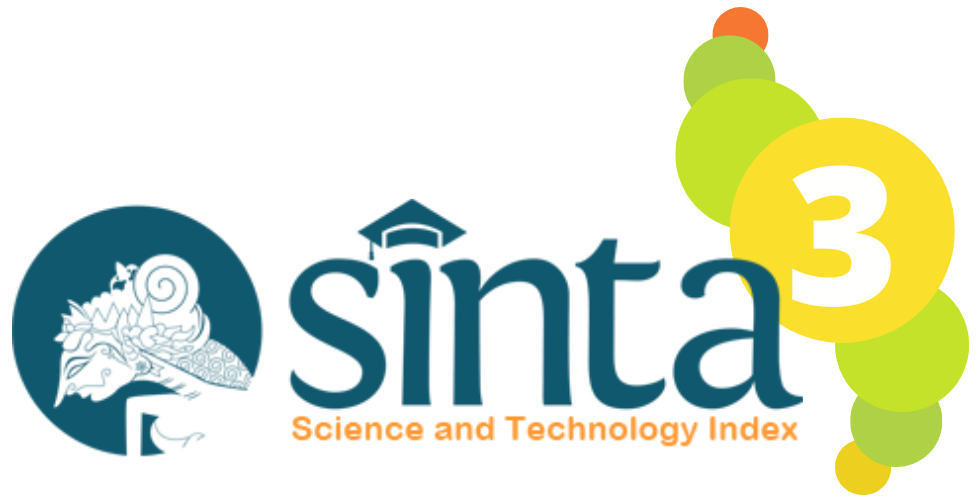Analisis Muatan Nilai-Nilai Karakter Pada Buku Siswa Kelas IV Sekolah Dasar Tema Indahnya Kebersamaan
DOI:
https://doi.org/10.32585/dikdasbantara.v3i2.882Abstract
Penelitian ini bertujuan untuk mendeskripsikan muatan nilai-nilai karakter yang terdapat dalam buku siswa kelas IV Tema 1 Indahnya Kebersamaan. Penelitian ini termasuk penelitian deskripstif kualitatif dan merupakan jenis penelitian studi pustaka. Data dalam penelitian ini merupakan pernyataan-pernyataan yang mengandung nilai-nilai karakter. Teknik pengumpulan data dengan menggunakan teknik baca, teknik simak dan teknik catat. Metode analisis data yang digunakan adalah analisis teks dan bahasa dengan menggunakan teknik analisis isi (content analysis). Berdasarkan hasil analisis, dari 18 nilai-nilai karakter yang dicanangkan oleh Kemendiknas, ditemukan 17 nilai karakter dalam buku tematik kelas IV Tema 1 Indahnya Kebersamaan yaitu: (1) religius, (2) jujur, (3) toleransi, (4) kerja keras, (5) kreatif, (6) mandiri (7) demokratis, (8) semangat kebangsaan, (9) rasa ingin tahu, (10) cinta tanah air, (11) menghargai prestasi, (12) komunikatif, (13) cinta damai,(14) Gemar Membaca, (15) peduli lingkungan, (16) peduli sosial, dan (17) tanggung jawab. Hal ini berarti terdapat satu nilai karakter yang belum ditemukan yaitu nilai karakter disiplin.
Kata Kunci: Nilai-Nilai Karakter, buku siswa, Indahna Kebersamaan
Downloads
References
Akbar, Sa’dun. 2013. Instrumen Peningkatan Pembelajaran. Bandung. PT. Remaja Rosdakarya.
Bungin, Burhan. 2011. Penelitian Kualitatif. Jakarta: Kencana Predana Group.
Daryanto dan Darmiatun, Suryatri. 2013. Implementasi Pendidikan Karakter di Sekolah. Yogyakarta: Gava Media.
Hidayatulloh, F. 2010. Pendidikan Karater, Membangun Peradaban Bangsa. Surakarta:Yuma Pustaka.
Kemendikbud. 2013. Peraturan Menteri Pendidikan dan Kebudayaan Nomor 64 Tahun 2013, tentang Standar Isi Pendidikan Dasar dan Menengah. Peraturan Menteri Pendidikan dan Kebudayaan Nomor 67 Tahun 2013, tentang Kerangka Dasar dan Struktur Kurikulum SD/MI.
Mulyasa. 2012. Manajemen PAUD. Bandung: Remaja Rosdakarya.
______. 2014.Pengembangan dan Implementasi Kurikulum 2013. Bandung: PT Remaja Rosdakarya.
Muslich, M. 2010. Text Book Writing: Dasar-dasar Pemahaman, Penulisan, dan Pemakaian Buku Teks. Yogyakarta: Ar-Ruzz Media.
Naim, N. 2012. Character Building: Optimalisasi Peran Pendidikan dalam Pengembangan Ilmu dan Pembentukan Karakter Bangsa. Yogyakarta: ArRuzz Media.
Rachmah, Huriah. 2013. Nilai-Nilai Dalam Pendidikan Karakter Bangsa Yang Berdasarkan Pancasila dan UUD 1945. Cimahi: Jurnal. Vol. 1, No. 1: 11-13.
Ridwan, Mudiono. 2017. Analisis Muatan Nilai-Nilai Karakter Pada Buku Siswa Kelas IV Sekolah Dasar Tema Indahnya Kebersamaan. Jurnal Pendidikan 3(1), 1-7.
Salahudin, Anas. 2013. Pendidikan Karakter. 076-366-1. Bandung : CV. Pustaka Setia.
Sugiyono. 2017. Metode Penelitian Kuantitaif, Kualitatif dan R&D. Bandung: ALFABETA.
Utami, Ratnasari Diah. 2015. Membangun Karakter Siswa Pendidikan Dasar Muhammadiyah Melalui Identifikasi Implementasi Pendidikan Karakter Di Sekolah. Jurnal Profesi Pendidikan Dasar (JPPD). Vol.2, No. 1, Juli 2015.
Zubaedi.2011. Desain Pendidikan Karakter. Jakarta: Prenada Media Group.
Downloads
Additional Files
Published
Issue
Section
License
The copyright to this article is transferred to Jurnal Dikdas Bantara if and when the article is accepted for publication under Creative Commons Attribution-ShareAlike 4.0 International License. The undersigned hereby transfers any and all rights in and to the paper including without limitation all copyrights to Jurnal Dikdas Bantara. The undersigned hereby represents and warrants that the paper is original and that he/she is the author of the paper, except for material that is clearly identified as to its original source, with permission notices from the copyright owners where required. The undersigned represents that he/she has the power and authority to make and execute this assignment.We declare that:
1. This paper has not been published in the same form elsewhere.
2. It will not be submitted anywhere else for publication prior to acceptance/rejection by this Journal.
3. A copyright permission is obtained for materials published elsewhere and which require this permission for reproduction.
Furthermore, I/We hereby transfer the unlimited rights of publication of the above-mentioned paper in whole to Jurnal Dikdas Bantara. The copyright transfer covers the right to reproduce and distribute the article, including reprints, translations, photographic reproductions, microform, electronic form (offline, online), or any other reproductions of similar nature. The corresponding author signs for and accepts responsibility for releasing this material on behalf of any and all co-authors. After submission of this agreement signed by the corresponding author, changes of authorship or in the order of the authors listed will not be accepted.
Retained Rights/Terms and Conditions
1. Authors retain all proprietary rights in any process, procedure, or article of manufacture described in the work.
2. Authors may reproduce or authorize others to reproduce the work or derivative works for the author’s personal use or for company use, provided that the source and the Jurnal Dikdas Bantara copyright notice are indicated, the copies are not used in any way that implies Jurnal Dikdas Bantara endorsement of a product or service of any employer, and the copies themselves are not offered for sale.
3. Although authors are permitted to re-use all or portions of the work in other works, this does not include granting third-party requests for reprinting, republishing, or other types of re-use.



















